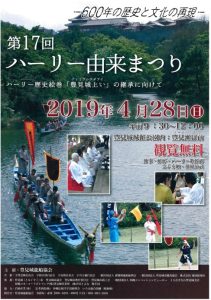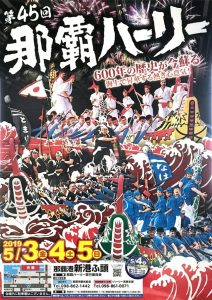The birthplace of karate, Okinawa is also known as one of the world's blue zones or longevity regions.
A brief introduction to Okinawa's eating habits may reveal the relationship between longevity and food. The basic food of Okinawa is rice, vegetables, pork, fish, tofu and fruits. Consumption of vegetables is also high, and among them, mustard green, winter melon, pumpkin, bean sprouts, napa cabbage, white radish, and edible wild grass are often eaten. Okinawa's typical daily menu is composed of rice, miso soup and side dishes, usually the stir-fried dish chanpurū and pickles. Okinawa's most representative dish, “Chanpuru” (which means mixture) is a fried dish of tofu, green and yellow vegetables.
Okinawan cuisine has two origins. One is the court cuisine of the Shuri royal court which the other is the food of commoners. Court cuisine was developed under the influence of China and Japan during the Ryukyuan dynasty; the latter was born in common families. In addition, various foreign cuisines have been introduced in postwar Okinawa, and now you can enjoy French cuisine, South American cuisine and many others in the prefecture.
For visiting karate enthusiasts to enjoy various Okinawa dishes, the OKIC staff goes out and brings you through this new “Teeanda corner”(1) some new ideas of restaurants and sweets shops that anyone can visit for new Okinawan tastes while touring karate monuments and other cultural sites. Check regularly for new updates!
Tianda No. 1: the restaurant “Ufuyā” (Nago City)
Tianda No. 2: Tomigusuku Shokudō (Tomigusuku City)
Tianda No. 3: Café Captain Kangaroo (Nago City)
Tianda No. 4: Yamagusuku (Naha City Shuri)
(1) In Uchinarguchi or Okinawan language, the expression “Tīanda” means to do your best at cooking. The term supposedly comes from "hand’s oil"; It means that the dish is prepared with so much love that the oil of hands infiltrates the dish during the preparation. On the side, “tienda” in Spanish means a shop. The title of this new column was choosen in reference to these similar words.
Reference: "Okinawa no Bunka - Keys to Okinawan Culture" Published by the Okinawa Prefecture – Year of publication: 1992
Since its establishment in April 2016, the Okinawa Prefecture Government (OPG) Karate Promotion Division has been handling various projects and important work.
During the 2016 fiscal year, a survey on the situation of karate in Okinawa was conducted. It clearly pointed the issues that is facing karate like securing students, the lack of successors, the handling of karate visitors, the low awareness of "the birthplace of karate, Okinawa," and the lack of karate specialists.
After that, in order to strategically pursue efforts to preserve, pass on, and develop karate, which is a traditional culture that Okinawa is proud of, the OPG, karate related organizations, economic circles among others have come together to formulate the “Okinawa Karate Promotion Vision (Overview / Full version)” in March 2018. It depicts a vision of the future to be achieved in 20 years.
The “Okinawa Karate Promotion Vision Road Map (Overview / Full version)” was compiled in March 2019. It is a concrete process for achieving the said promotion vision. Based on this roadmap, the OPG will promote various measures in a systematic and efficient manner, collaborating closely with related parties.
Please accept our apologies as all documents are in Japanese only.
The three major festivals of Naha are the Tsuji Juri-uma Matsuri (Juri-uma parade of Tsuji), Naha Hārī (Naha dragon boat race) and the Naha Otsuna-hiki (Naha Great tug of war).
The Tsuji area, known as the red lantern district, was known as “Hana nu shima” of island of flowers. It is there that guests were entertain through Ryukyuan music, dances and cuisine. The Tsuji parade occurring in the end of March is a festival to pray for a good year and business prosperity.
Dragon boat races are generally known as a part of Sea God festival to pray for good catches and safety. But the original dragon boat race was started for the purpose of praying for rich harvests and people's peace.
Tugs of war are farming village events held in rural areas to pray for rain for rice cultivation, five cereal rich harvests and good fortune. Compare to this, great tugs of war are events held in urban area (town and city). Naha’s great tug of war symbolizes the trading city that is Naha.
Before Naha Hārī is held May 3-5, the Hārī yurai festival, an ancient ritual is also held April 28 in Tomigusuku Castle Ruin Park where the Okinawa Karate Kaikan stands. Karate performances are traditionally held during the event. We hope that many people will participate in these two dragon boat events.
About the origin of dragon boat race, we introduce 2 documents edited by the Tomigusuku dragon boat association.
(Please note that the Japanese PDF has some historical pictures not used in the English version)
The Ministry of Sports of Japan has released a new movie.
Representing Okinawa Karate, Okinawa Gōjū-ryū Karatedō Association Kenshūkan Uechi Karate Dōjō's head Uechi Kenō sensei among others. This dōjō is located in Ishigaki island. Furthermore, the three ladies demonstrating karate are from the Yamanashi Gakuin University's ladies karate club. Among them, two are from Okinawa.
https://www.youtube.com/watch?v=amwsFDEVjSg&feature=youtu.be


